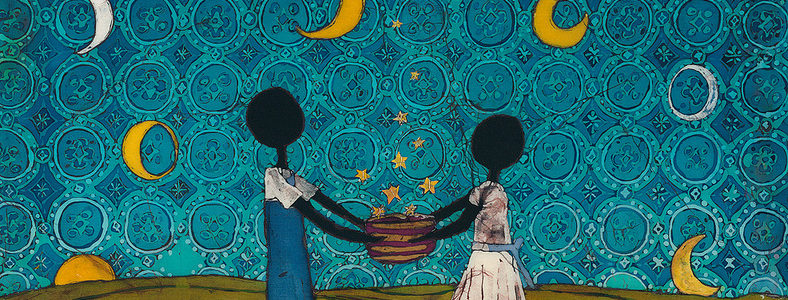
Meet Lisa Telling Kattenbraker, the 2018 Bayou City Art Festival Memorial Park Featured Artist
 The Bayou City Art Festival Memorial Park, slated for March 23-25, will host Lisa Telling Kattenbraker as their Featured Artist.
The Bayou City Art Festival Memorial Park, slated for March 23-25, will host Lisa Telling Kattenbraker as their Featured Artist.
Kattenbraker is a contemporary batik artist, and she’s traveling to the nation’s premier outdoor fine art event on March 23-25 all the way from Olympia, WA.
She, along with 300 artists from around the country representing more than 19 different disciplines, will showcase their art at Bayou City Art Festival Memorial Park, with proceeds benefiting Houston non-profits.

Memories Are Now–Official featured artwork for the 2018 Bayou City Art Festival Memorial Park
Kattenbraker uses traditional batiking patterns and combines them with contemporary images – figures that are usually faceless – allowing the viewer to add their own emotional moment to the experience.
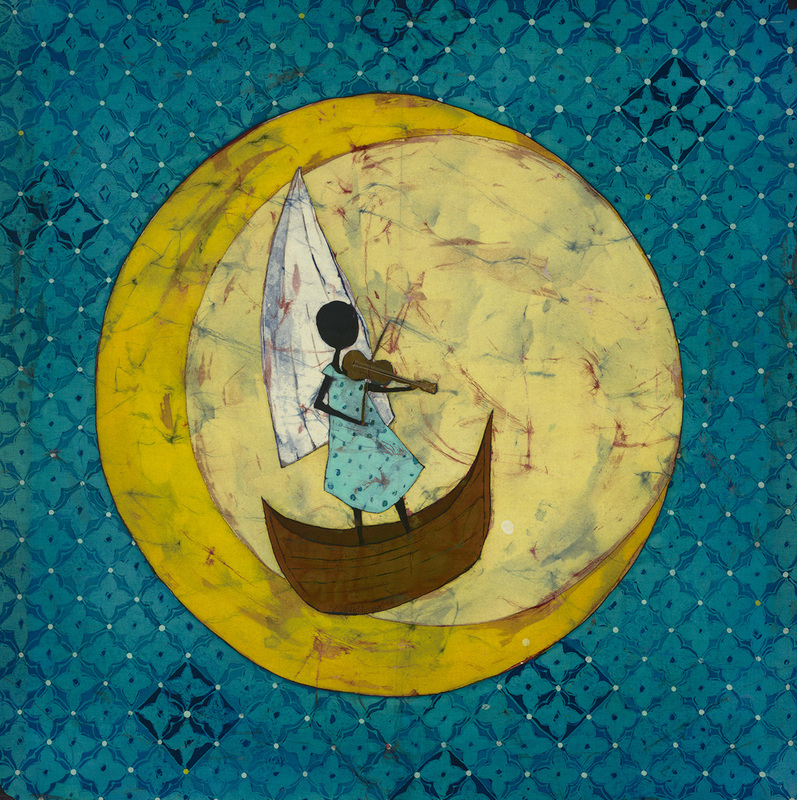 She creates stories based on inner landscapes, feelings, thoughts, ideas and memories using the ancient method of batik. In her work, Kattenbraker strives to ignite a touching response through the different patterns, symbols and colors.
She creates stories based on inner landscapes, feelings, thoughts, ideas and memories using the ancient method of batik. In her work, Kattenbraker strives to ignite a touching response through the different patterns, symbols and colors.
Learn about her history and approach to her art
When were you first introduced to working with batik?
I was introduced to Batik in my sophomore year of high school in a “Fiber Arts” class. I was always drawn to different art forms and had been searching for the one that I would LOVE. I immediately took to Batik for a couple of reasons: There was something non-linear and tricky to it- an element of piecing a puzzle together to get the desired result.
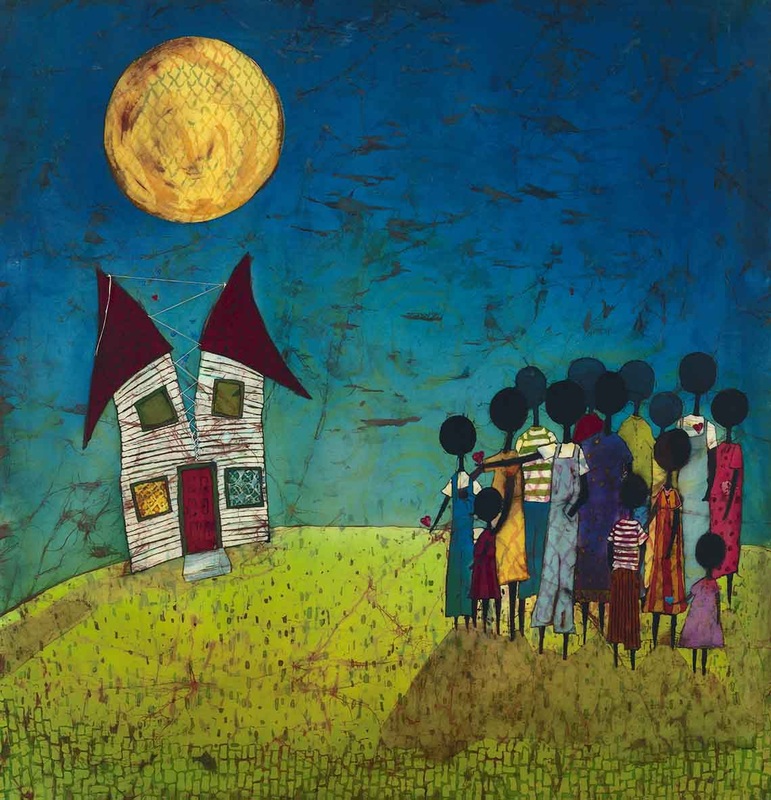
What was it about the medium that drew you to make this your medium of choice?
I loved the tactile nature of the process- there was a drawing element, the fiber element, the smell and feel of the wax, and then a painterly element as well. But one of the biggest draws was the lack of control- at some point, no matter how well I think I am doing with controlling the wax and the dye, I have to let the piece go- let it sit in the dye and do its own thing. The element of surprise at the end when I iron the wax out of the fabric and see the way the dye has seeped through unintended cracks and fissures is always exhilarating. A plug here for my parents: they were hugely supportive in my messy endeavors at home. They created a studio for me in the basement and my mom cleaned dye out of our tubs and wax out of the carpet endlessly. The freedom to make those messes gave me the courage to experiment with the medium. 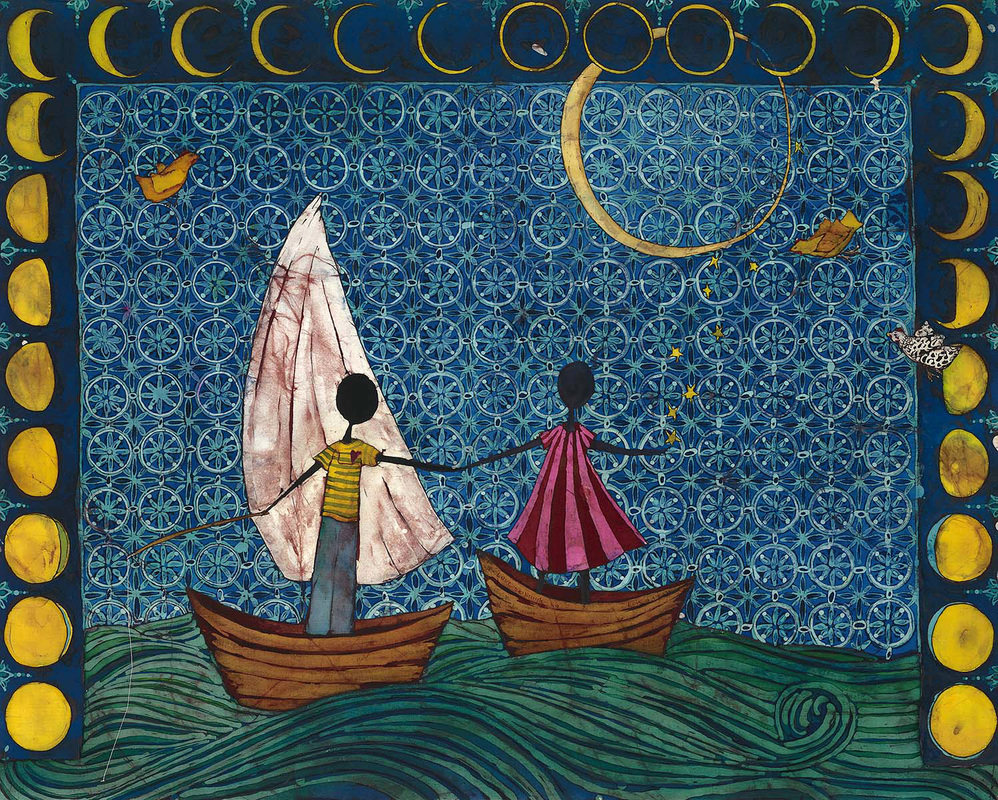
Talk briefly about your composition of pieces. What inspires you?
I’ve always turned to art (since being a child) as an emotional outlet. My pieces are often times a version of some part of my life that I am working through, or celebrating. They have also become a way to connect with others. I incorporate color and patterns that I pull from many places, but always imbued with intention, attempting to capture and communicate through symbols and color.
My intention has always been to create art based around story, love, connection, emotional process, and similarity…
I began the process of the particular style of my art over 15 years ago using stick figures as a blank canvas structure to be used for story telling with my own small children and their friends…it quickly became part of my studio art life as it resonated with other people (not just the kids) as a way to tell their own stories.
Over the past handful of years, I have seen the American conversation evolving to finally be including much more dialogue about race. Occasionally at shows, I find myself unwittingly in the midst of that conversation. It’s not something I intended toward, nor is it something I shy away from. I have been both amused and appalled over the years at the questions I have received regarding the “race” or distinguishing the characters in my pieces. And while I (and most of the viewers and collectors over the years) have always seen and intended them as “iconic” stick people, no eyes, faces, hands, feet, some people (and by some people, I mean mostly some white people) inherently see these figures as a particular race or nationality.
When someone sees themselves in the figures, I feel I have done my job. When someone sees something “other” I find it an eye opening experience for me, one that I did not see myself having to consistently explain- the color of the people in my pieces are a combination of ALL the colors in the piece itself. The shape of the figures stays “open” through the dye process to accept all the dyes, thus adding layer upon layer of color- these figures are essentially a product of the combination of the whole background scene. 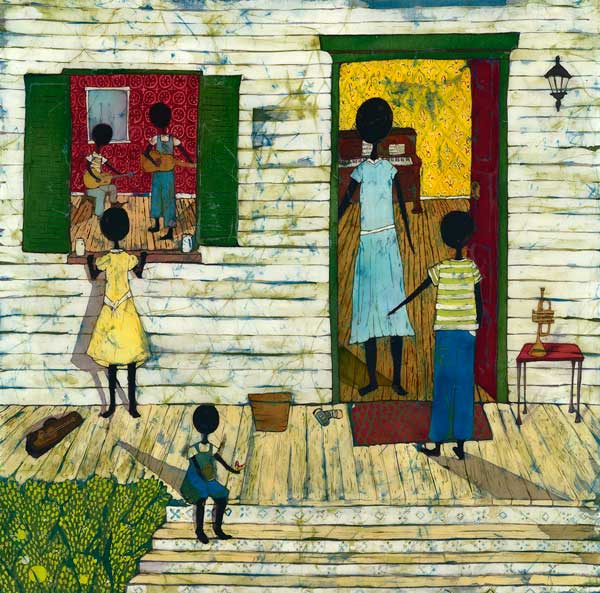
While the conversations, and the various reactions have not changed the way I continue to present my “human forms” in art, it has opened up new dialogue about how we as a community and culture see race, whether and where it subverts itself into consciousness, how and where race shows up as a form of personal recognition, and how it connects or divides us on both a conscious and subconscious level. I am not always eloquent when talking about this in my booth. I am learning, and listening.
What do you hope viewers take away from your work?
My hope, always, is that viewers are able and willing to look at themselves and one another and dig deeper into our human experiences to find the common threads, the deep tissue of emotional experience that we can identify with in one another. While each person has their own history, path, and story unique unto themselves -the bits and pieces that we can identify and share as common ground can help us bridge beyond differences and hopefully allow us to connect in a way that can create something that is larger than ourselves, something that can possibly heal. When we see familiar aspects of ourselves in other people, we feel so much less alone. This all started with sharing stories…creating a landscape in which to tell stories…I hope with all my heart that the work will continue to allow that.
Advice for someone considering this medium:
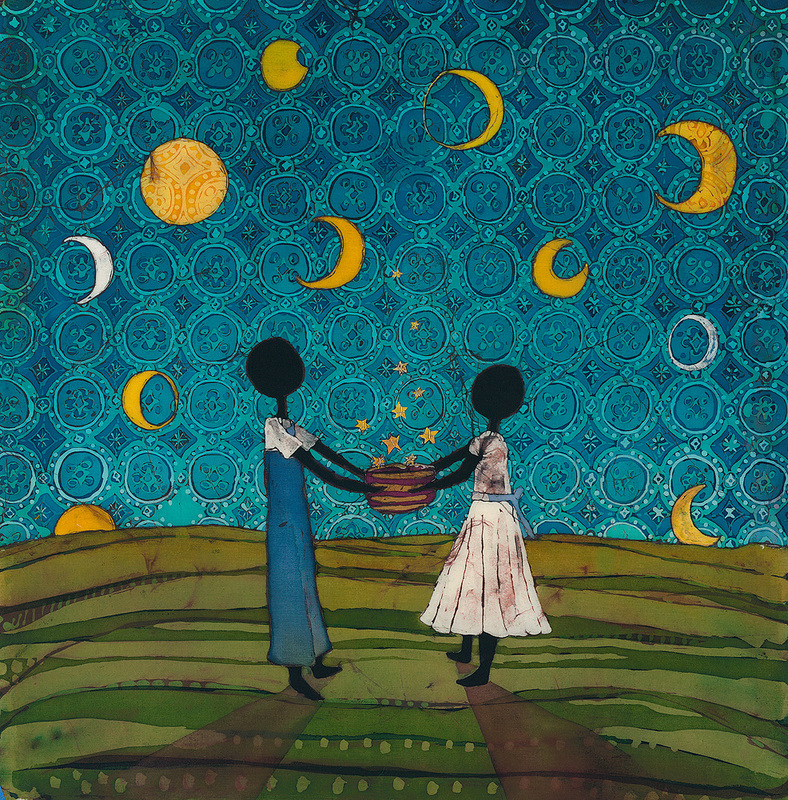 Have fun! This medium is not for the faint of heart, it is a long, slow, messy process that is full of spills and “mistakes”. Letting go of expectations is key. There are some great new products out there to start with- soy wax is a much less toxic wax to work with than paraffin, and is easier to clean :). Start with an old sheet, shirt, fabric, some soy wax and some watercolors to get the hang of how the process works. And have fun. There’s so much to explore and I look forward to seeing what the next generation does with this!
Have fun! This medium is not for the faint of heart, it is a long, slow, messy process that is full of spills and “mistakes”. Letting go of expectations is key. There are some great new products out there to start with- soy wax is a much less toxic wax to work with than paraffin, and is easier to clean :). Start with an old sheet, shirt, fabric, some soy wax and some watercolors to get the hang of how the process works. And have fun. There’s so much to explore and I look forward to seeing what the next generation does with this!
BAYOU CITY ART FESTIVAL INFORMATION:
Go to www.artcolonyassociation.org.